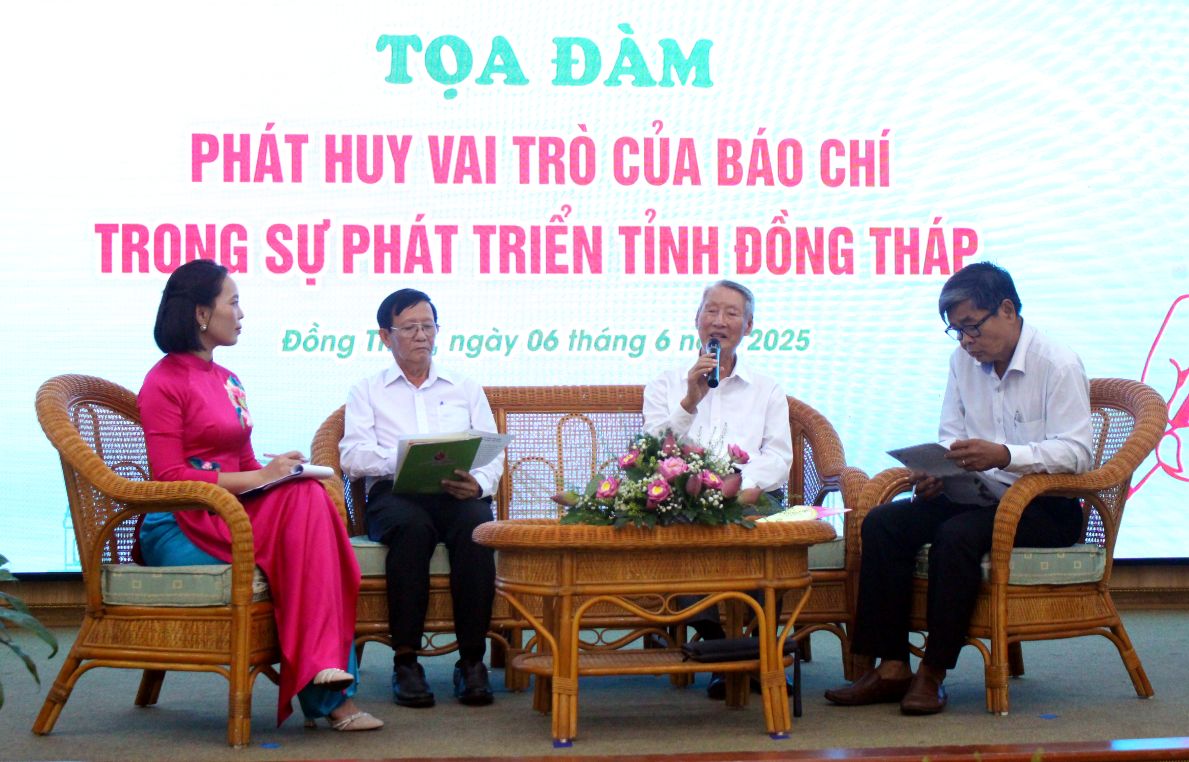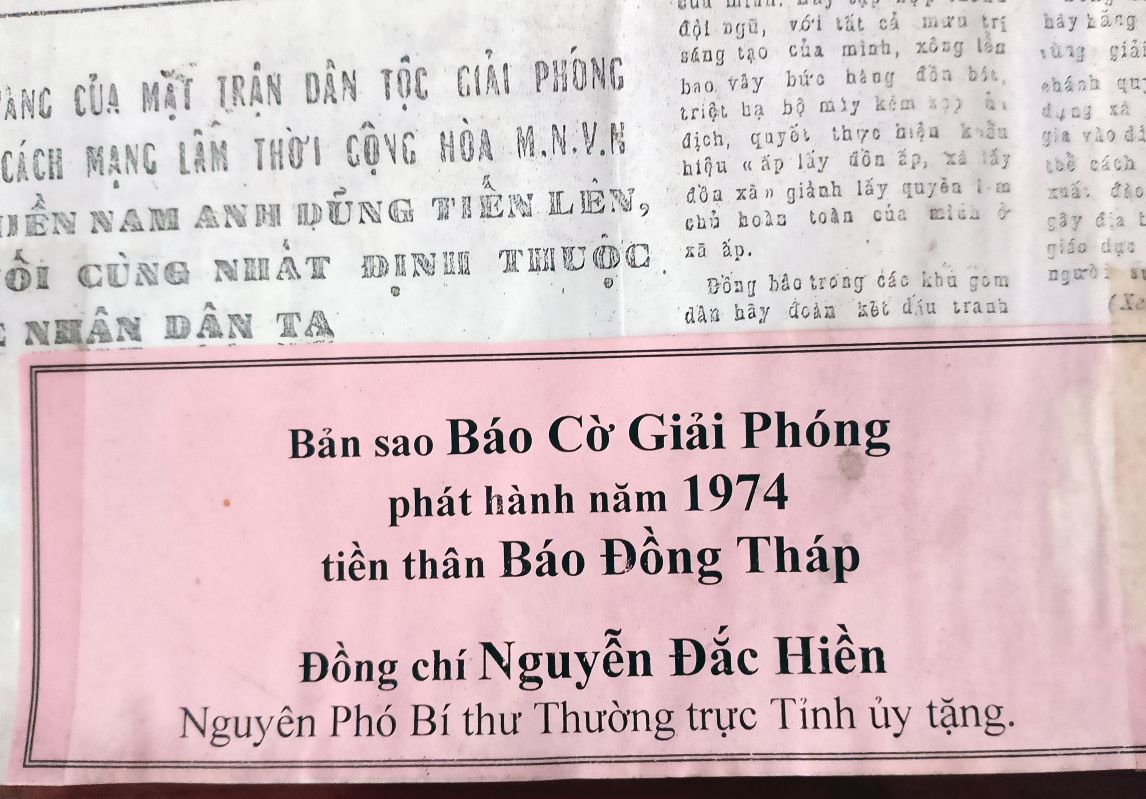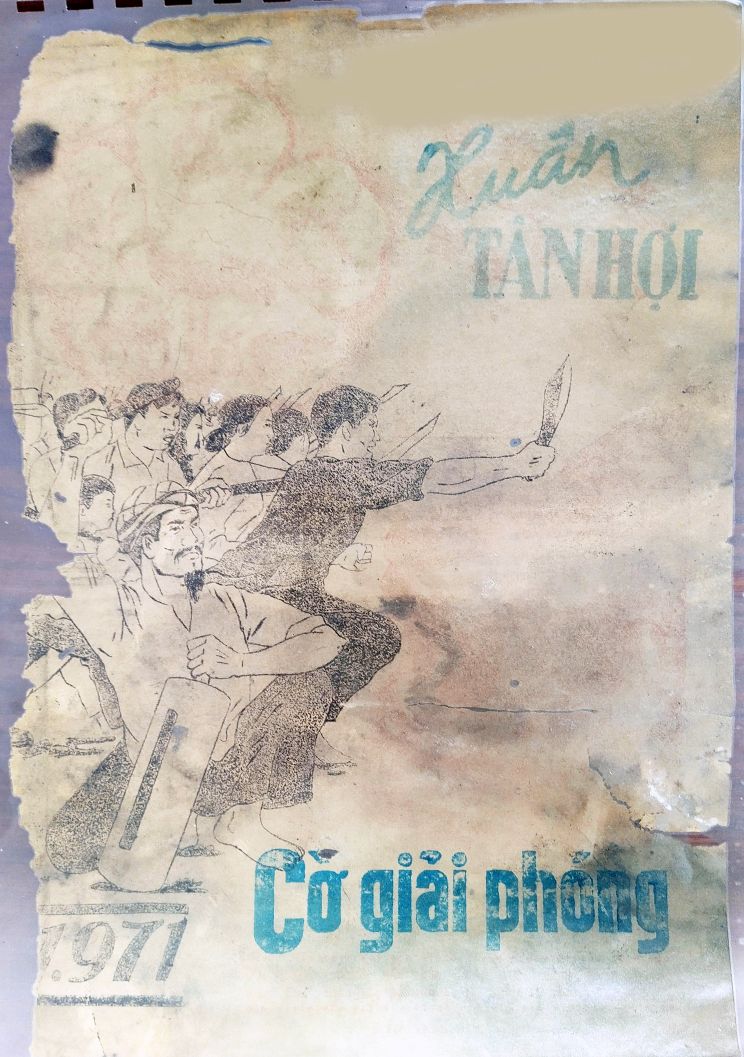Stir-frying for printing newspapers
To have a report to the people, soldiers and a petition to mobilize officers and soldiers... we have to divide the people to powder, the people to powder, and then make molds... - Mr. Nguyen Dac Hien, former Standing Deputy Secretary of the Dong Thap Provincial Party Committee, former reporter of Co Giai Phong newspaper (formerly Dong Thap newspaper) moved those present at the seminar on the occasion of the 100th anniversary of the Vietnam Revolutionary Journalism Day, the burning of the journalism of the resistance war against the US.

The rice flour is then finely ground, dried, and then stuffed until rolled on the surface with a thinly coated mold. Then spread the flour evenly so that the other part can use the winning ink (cooking with it) to write the words on the paper. Next, spread the paper on the flour surface, stroke gently to ensure the ink is absorbed... Usually, when eight to ten sheets are printed, the letters are blurred and cannot be printed anymore. Here, another part of the broken flour is dried to use next time.
"After that, the brothers researched buying cotton dye and cooked it to replace the previousink. With this type of ink, the number of prints has increased, but only 40 to 60 copies must be replaced" - Mr. Dac Hien shared more.

In June 5, 2021, through a revolutionary establishment in Saigon, a metro printing machine was purchased, but because there were no typewriters, journalists had to create a new way of printing. In addition to maintaining the powder printing technique, journalists also use wax paper pens, write letters on wax paper and print. The printing room is made of wood, thin silk panels are stretched, a wax page is applied to it, placed on a paper surface, and then used a printing ink board made from a wrench to pull on the silk plate to print the ink on the paper.
In 1957, when a pencil printer was available, journalists were honored to be asked by the Central Committee of the Southern Branch to help print "Southern Revolutionary Outline" drafted by comrade Le Duan to distribute to the provinces.
Rapid work
Working as a journalist in the South's resistance zone felt like living under pressure. Not only facing the " bomb rain, bullets" with loss and sacrifice, the uncles and aunts also have to race against time. A typical example is the time of the 1968 Mau Than campaign, when journalists were almost up all night for many consecutive days.

After 2 days (27 - 28) on December (1968) according to the rumored soldiers, on the night of December 28, when he arrived at the headquarters of the Press Information Subcommittee, he was assigned to bring documents from the Provincial Party Committee to request immediate printing and at exactly 10:00 a.m. on December 29, all printing documents must be delivered to the inter-provincial delivery station to serve the campaign" - Mr. Hien recalled.
Following the order, the journalists lit up and worked until morning. In the morning, the army attacked Cao Lanh again. Due to the lack of surprise, the war was extremely fierce and in order to promptly encourage the brave spirit of Uncle Ho's soldiers, the journalists reported the hot news.
Every ten minutes after a match, there is a war bulletin. The news was made in a very special context. "The sky was full of fireworks and bullets, we sat under the Ministry of Public Security and used turned-off flashlights to block the shining light to both write and beat Morse to convey the news" - Mr. Hien recalled.
And also from the hot works of the Lunar New Year, the leaders chose more than 20 photos and sent them to Nam Vang for Trung Lap newspaper to produce zinc. Thanks to that, the Tet newspaper has printed photos for the first time".

After half a century of peace, the Southern Resistance has now changed hands. The fields filled with bomb holes and bullets of the past, now covered with the warm green of rice fields, gardens... It is a pity that newspapers and records of journalists traveling in the rain of bombs and bullets to promptly record the war, cheer and encourage the soldiers of Uncle Ho who fought in the past to have no more to let future generations fully imagine their ancestors. However, with what is available, it is enough for history to recognize as a proud mark of the flow of the Vietnamese Revolutionary press in the Southwest of the Fatherland.











